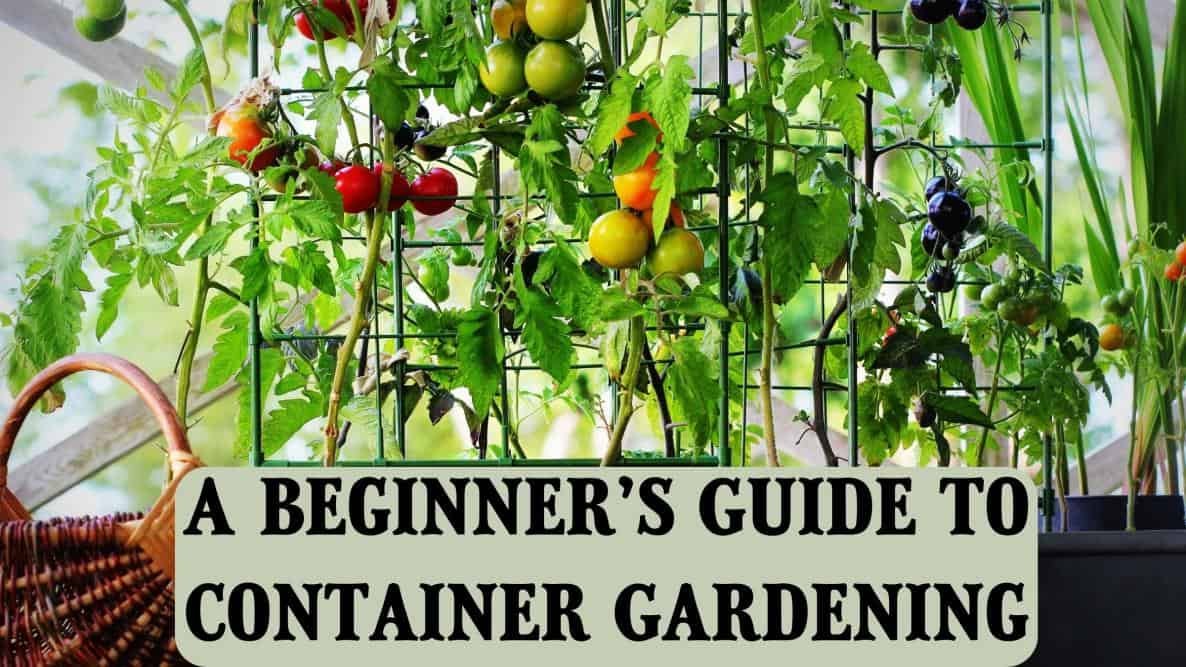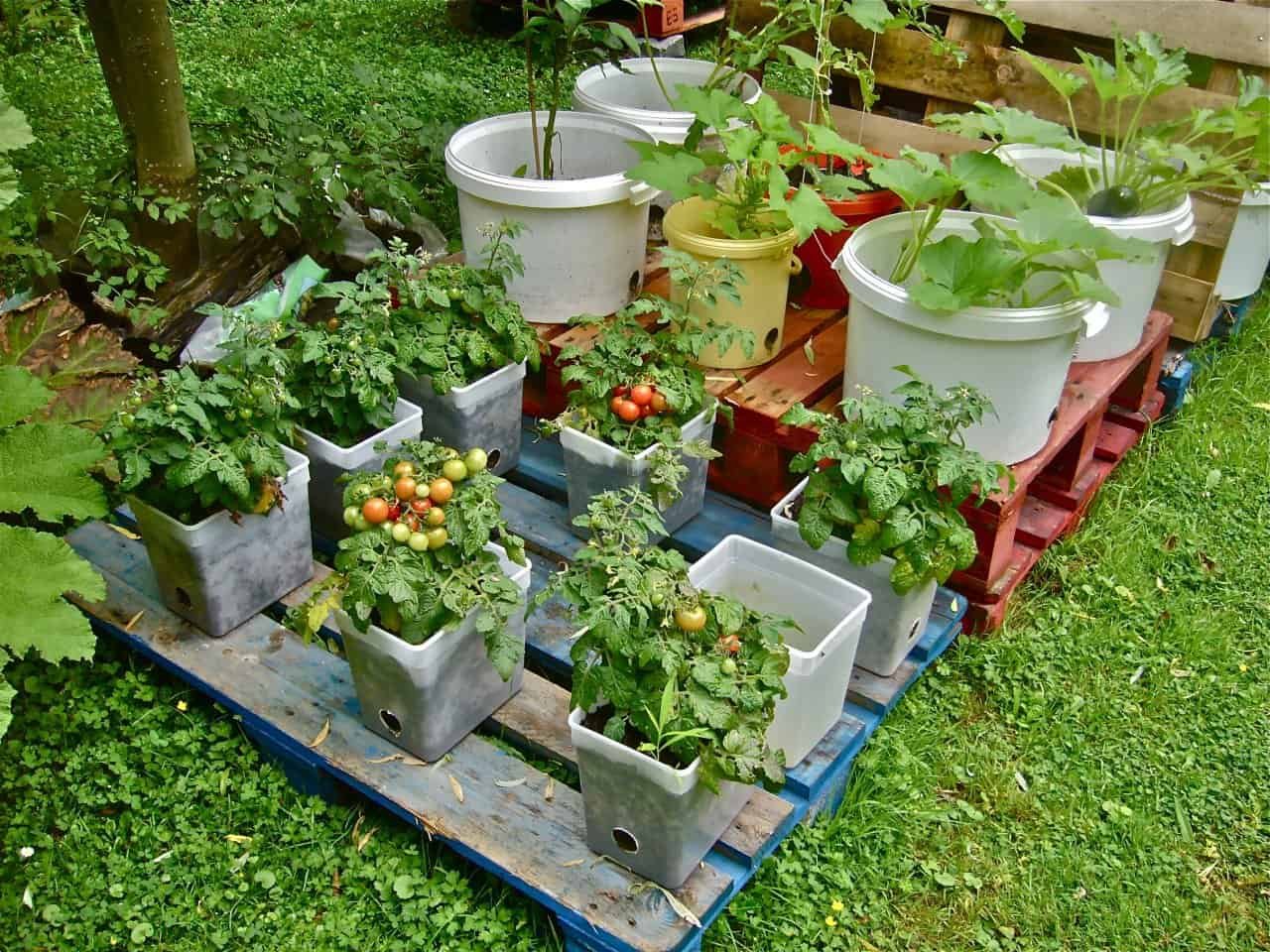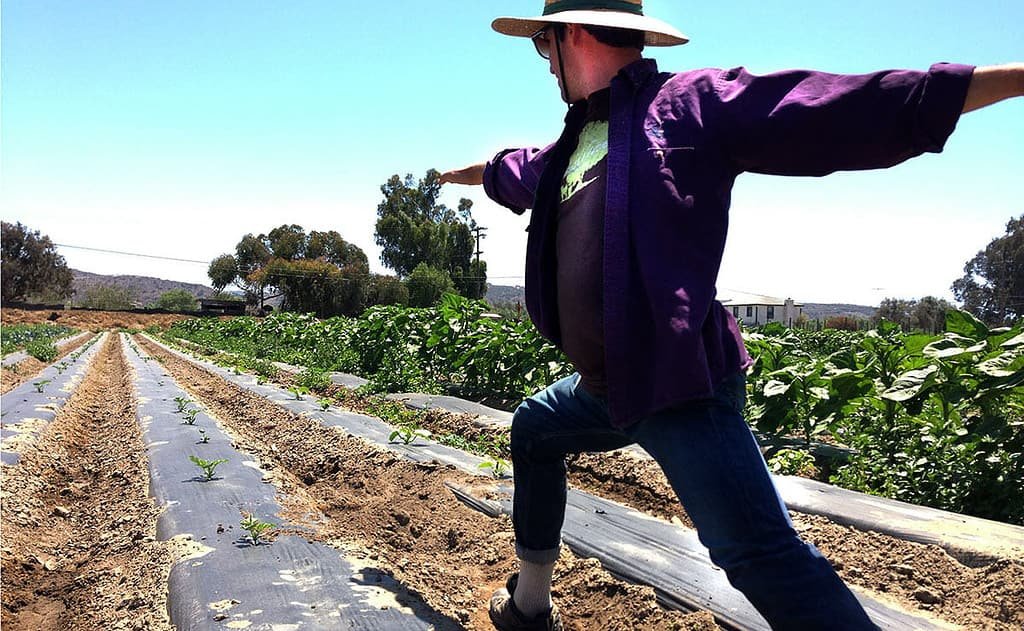How to Start a Container Vegetable Garden? Starting a container vegetable garden entails selecting suitable containers, choosing appropriate vegetable varieties, ensuring proper soil composition and drainage, providing adequate sunlight and water, and implementing regular maintenance practices such as fertilization and pest control for optimal growth and yield.
The Ultimate Guide to Growing Fresh Produce in Containers
Container gardening is a popular and practical way to grow fresh produce at home, especially for those with limited space. Whether you live in an apartment with a small balcony or have a tiny backyard, container gardening allows you to enjoy the benefits of growing your own fruits and vegetables without the need for a traditional garden bed.
One of the main benefits of container gardening is its versatility. You can easily move your containers around to take advantage of the best sunlight or protect your plants from extreme weather conditions. This flexibility also allows you to experiment with different plant combinations and create visually appealing displays.
Another advantage of container gardening is that it requires less maintenance compared to traditional gardening methods. With containers, you have better control over the soil quality, watering, and fertilizing, which can result in healthier plants and higher yields. Additionally, container gardening reduces the risk of weeds and pests, making it an ideal option for beginners or those with limited time for gardening.
Choosing the Right Containers: Tips for Selecting the Best Containers for Your Plants
When it comes to choosing containers for your plants, there are a few factors to consider. First, you need to determine the type of container that suits your needs and preferences. There are various options available, including plastic pots, ceramic pots, wooden boxes, hanging baskets, and even repurposed items like old buckets or tires. Each type has its own advantages and disadvantages, so choose one that fits your aesthetic preferences and budget.
Size and depth are also important considerations when selecting containers. The size of the container will depend on the type of plant you want to grow and its root system. Generally, larger plants require larger containers to accommodate their roots and provide enough space for growth. On the other hand, smaller plants like herbs or lettuce can thrive in smaller containers.
In terms of material options, plastic containers are lightweight, affordable, and easy to clean. They also retain moisture well, which can be beneficial for certain plants. Ceramic pots, on the other hand, are more aesthetically pleasing and provide better insulation for the roots. Wooden containers are durable and provide good drainage, but they may require more maintenance to prevent rotting.
Soil and Fertilizer: How to Prepare Your Container Garden for Optimal Growth
Choosing the right soil and fertilizer is crucial for the success of your container garden. The type of soil you use will depend on the plants you want to grow and their specific needs. Generally, a well-draining potting mix is recommended for container gardening. This type of soil allows excess water to drain away, preventing root rot and other moisture-related issues.
You can either purchase a pre-made potting mix or create your own by combining different ingredients. A typical potting mix consists of a combination of peat moss, perlite or vermiculite, and compost or organic matter. This mixture provides good drainage while retaining enough moisture for the plants.
Fertilizing your container garden is also important to ensure optimal growth and productivity. There are various fertilizer options available, including organic and synthetic options. Organic fertilizers are derived from natural sources like compost, manure, or bone meal. They release nutrients slowly over time and improve the overall health of the soil. Synthetic fertilizers, on the other hand, provide nutrients in a more concentrated form and are quickly absorbed by the plants.
It’s important to follow the instructions on the fertilizer packaging and avoid over-fertilizing your plants, as this can lead to nutrient burn or other issues. Regularly monitoring the health of your plants and adjusting the fertilizer application accordingly is key to maintaining a healthy container garden.
Picking the Right Plants: Best Vegetables and Fruits to Grow in Containers

When selecting plants for your container garden, consider their space requirements. Some plants, like tomatoes or peppers, may require larger containers to accommodate their growth. Others, like herbs or lettuce, can be grown in smaller pots or even hanging baskets.
Seasonal considerations are also important when choosing plants for your container garden. Some plants are better suited for cool-season gardening, while others thrive in warm weather. Research the specific requirements of each plant and choose varieties that are suitable for your climate and the time of year you plan to grow them.
| Plant Type | Examples | Sun Needs | Size Considerations | Features |
|---|---|---|---|---|
| Herbs | Basil, rosemary, mint, thyme, chives | Full sun (6+ hours) | Varies by plant, some stay compact | Easy to grow, culinary uses, many are fragrant |
| Vegetables | Tomatoes (determinate varieties), peppers, cucumbers (bush varieties), beans, lettuce, carrots (smaller varieties) | Mostly full sun | Varies greatly, choose compact or dwarf varieties | Fresh produce, reward for limited space |
| Succulents | Echeveria, Aloe vera, Jade plant, Snake plant | Full sun to partial shade | Generally small and slow-growing | Low maintenance, drought-tolerant, diverse textures |
| Flowers | Marigolds, petunias, pansies, impatiens, geraniums, zinnias | Varies by type, many thrive in full sun | Choose compact or trailing varieties | Adds color and beauty, attracts pollinators |
| Tropicals | Hibiscus, Bird of Paradise, Bougainvillea, Canna Lily | Full sun, often heat tolerant | Can be larger, consider pot size | Bold foliage, exotic blooms (with the right climate) |
Watering and Drainage: Essential Tips for Keeping Your Container Garden Healthy
Proper watering is essential for the health and productivity of your container garden. The frequency and amount of water needed will depend on various factors, including the type of plant, container size, and weather conditions. As a general rule, it’s better to underwater than overwater your plants, as excessive moisture can lead to root rot and other issues.
To determine when to water your plants, check the moisture level of the soil by sticking your finger about an inch deep into the soil. If it feels dry at that depth, it’s time to water. When watering, make sure to thoroughly saturate the soil until water drains out of the bottom of the container. This ensures that the roots receive enough moisture and prevents salt buildup in the soil.
Good drainage is also crucial for container gardening. Without proper drainage, excess water can accumulate in the bottom of the container and drown the roots. To improve drainage, make sure your containers have drainage holes at the bottom. You can also place a layer of gravel or broken pottery shards at the bottom of the container to prevent the soil from becoming waterlogged.
For those who are concerned about watering their plants regularly, self-watering containers can be a great option. These containers have a reservoir at the bottom that holds water, allowing the plants to draw moisture as needed. Self-watering containers can help maintain consistent moisture levels and reduce the risk of over or underwatering.
Sunlight and Temperature: Understanding the Importance of Light and Heat for Your Plants
Sunlight is one of the most important factors for the success of your container garden. Most vegetables and fruits require at least six hours of direct sunlight per day to thrive. Without enough sunlight, plants may become leggy, produce fewer fruits, or even die.
When choosing a location for your container garden, consider the amount of sunlight it receives throughout the day. Observe the area at different times to determine if it gets enough direct sunlight. If your space is limited or shaded, you can still grow certain plants that tolerate partial shade or dappled sunlight, such as leafy greens or herbs.
Temperature is another important factor to consider when growing plants in containers. Different plants have different temperature requirements, so it’s important to choose varieties that are suitable for your climate. Some plants, like tomatoes or peppers, thrive in warm weather and require temperatures above 60°F (15°C) to grow and produce fruits. Others, like lettuce or spinach, prefer cooler temperatures and may bolt or wilt in hot weather.
To protect your plants from extreme temperatures, you can use various techniques. For example, you can move your containers to a more sheltered area during heatwaves or provide shade using umbrellas or shade cloth. In colder climates, you can use insulating materials like straw or bubble wrap to protect your plants from frost.
Pest and Disease Control: How to Keep Your Container Garden Safe from Harmful Insects and Diseases
Pests and diseases can pose a threat to your container garden, but there are several preventive measures you can take to keep your plants safe. Common pests in container gardening include aphids, slugs, snails, and caterpillars. Diseases like powdery mildew or fungal infections can also affect your plants.
To prevent pests and diseases, it’s important to maintain good hygiene in your container garden. Regularly remove dead leaves or plant debris, as they can harbor pests or pathogens. Inspect your plants regularly for signs of infestation or disease, such as yellowing leaves, holes in the leaves, or wilting. Early detection allows you to take action before the problem becomes severe.
There are various organic pest control methods you can use to protect your container garden. For example, you can introduce beneficial insects like ladybugs or lacewings that feed on pests. You can also use organic insecticides like neem oil or insecticidal soap to control pests. These products are safe for humans and pets and do not harm beneficial insects.
When it comes to diseases, prevention is key. Avoid overwatering your plants, as excessive moisture can create a favorable environment for fungal infections. Provide good air circulation around your containers by spacing them apart and removing any obstructions. If you notice signs of disease, such as spots on the leaves or wilting, remove the affected parts immediately to prevent further spread.
Harvesting Your Produce: Tips for Picking Fruits and Vegetables at the Right Time
Knowing when to harvest your fruits and vegetables is important to ensure optimal flavor and quality. Each plant has its own signs of ripeness, so it’s important to research the specific requirements of each crop. In general, fruits and vegetables are ready to harvest when they reach their full size, develop their characteristic color, and are firm to the touch.
For example, tomatoes are ready to harvest when they are fully colored and slightly soft to the touch. Peppers should be harvested when they reach their mature color, whether it’s green, red, or yellow. Leafy greens like lettuce or spinach can be harvested when the outer leaves are large enough to eat.
When harvesting, use clean and sharp tools to avoid damaging the plants. Cut or twist the fruits or vegetables gently to avoid breaking the stems or branches. It’s also important to harvest regularly to encourage continuous production. Leaving overripe fruits or vegetables on the plant can signal to the plant that it has completed its life cycle and reduce further production.
After harvesting, store your produce properly to maintain its freshness and flavor. Some fruits and vegetables can be stored at room temperature, while others require refrigeration. Remove any damaged or spoiled produce to prevent the spread of disease or pests.
Container Garden Maintenance: How to Keep Your Garden Looking Great All Season Long
Maintaining your container garden is essential to keep it looking great and ensure the health of your plants. Regular pruning and trimming can help control the size and shape of your plants and promote better airflow. Remove any dead or yellowing leaves, as they can attract pests or diseases.
Soil and fertilizer maintenance is also important for the long-term health of your container garden. Over time, the soil in your containers may become depleted of nutrients, so it’s important to replenish them regularly. You can top-dress your containers with compost or organic matter, or use slow-release fertilizers to provide a steady supply of nutrients.
Pest and disease prevention should also be part of your regular maintenance routine. Inspect your plants regularly for signs of infestation or disease, and take action immediately if you notice any issues. Regularly clean your containers and tools to prevent the spread of pests or pathogens.
Creative Container Ideas: Unique and Creative Ways to Display Your Container Garden
Container gardening doesn’t have to be limited to traditional pots or planters. There are many creative and unique ways to display your container garden and add visual interest to your space.
One option is to repurpose old containers or items into planters. For example, you can use old buckets, tin cans, or wooden crates as containers for your plants. This not only adds a unique touch to your garden but also reduces waste and promotes sustainability.
Vertical gardening is another creative option for container gardening. You can use hanging baskets, wall-mounted planters, or trellises to maximize your space and grow plants vertically. This is especially useful for vining plants like tomatoes or cucumbers, as it allows them to grow upwards and saves valuable ground space.
You can also get creative with plant combinations in your containers. Mixing different plants with contrasting colors, textures, and heights can create a visually appealing display. For example, you can combine trailing plants like petunias or ivy with upright plants like geraniums or marigolds for a cascading effect.
Why Container Gardening is a Fun and Rewarding Way to Grow Fresh Produce at Home
In conclusion, container gardening is a great option for growing fresh produce at home, especially for those with limited space or time. The benefits of container gardening include its versatility, ease of maintenance, and the ability to grow a wide variety of plants. By choosing the right containers, soil, and fertilizer, and providing proper care in terms of watering, sunlight, and pest control, you can enjoy a bountiful harvest from your container garden.
Container gardening also allows for creativity and experimentation. You can choose unique containers, try different plant combinations, and even incorporate vertical gardening techniques to maximize your space. With proper maintenance and regular harvesting, your container garden can provide you with fresh and delicious produce throughout the growing season.
So why not give container gardening a try? Whether you have a small balcony, a tiny backyard, or even just a sunny windowsill, container gardening offers a fun and rewarding way to connect with nature, grow your own food, and beautify your living space. Start small with a few containers and gradually expand as you gain confidence and experience. With a little bit of planning and care, you can enjoy the benefits of container gardening and reap the rewards of your own homegrown produce.
Originally posted 2024-03-16 16:08:15.





